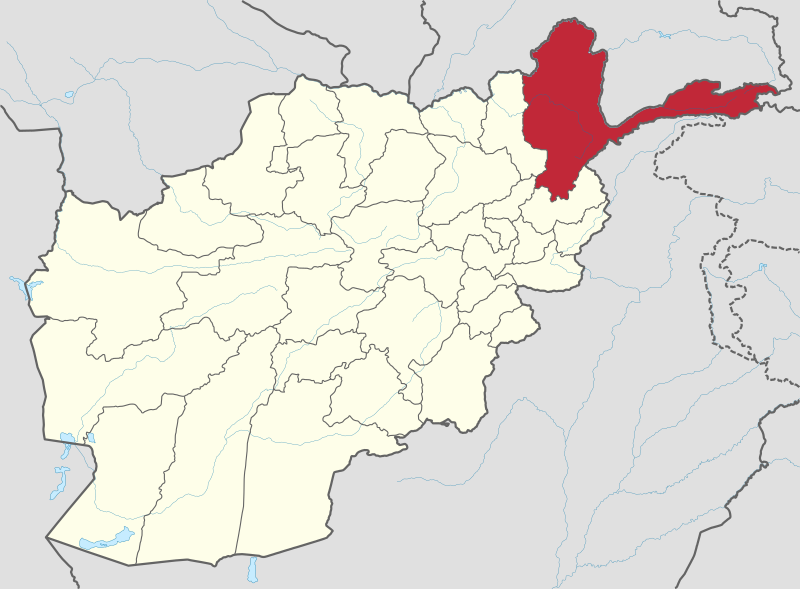CIVILISATIONS TIMELINE
☼ Prehistoric
:(100000 BCE - 3000 BCE)
☼ Ariana
:(3500 BCE - 1500 BCE)
☼ Indus Valley
:(3300 BCE - 1300 BCE)
☼ Helmand
:(3200 BCE - 1800 BCE)
☼ Oxus (BMAC)
:(2300 BCE - 1700 BCE)
☼ Achaemenid
:(550 BCE - 330 BCE)
☼ Greco-Bactrian
:(250 BCE - 125 BCE)
☼ Gandhara
:(0 CE - 400 CE)
☼ Kushan
:(30 CE - 375 CE)
☼ Sassanian Empire
:(224 CE - 651 CE)
☼ Hephthalites
:(400 CE - 500 CE)
☼ Islamic Caliphate
:(600 CE - 800 CE)
☼ Samanid dynasty
:(819 CE - 999 CE)
☼ Tahirid dynasty
:(821 CE - 873 CE)
☼ Saffarid dynasty
:(861 CE - 1003 CE)
☼ Ghurid Empire
:(879 CE - 1215 CE)
☼ Ghaznavid Empire
:(971 CE - 1186 CE)
☼ Delhi Sultanate
:(1206 CE - 1526 CE)
☼ Timurid dynasty
:(1220 CE - 1500 CE)
☼ Mughol dynasty
:(1526 CE - 1858 CE)
☼ Durrani empire
:(1747 CE - 1826 CE)
☼ Barekzai dynasty
:(1826 CE - 1929 CE)
☼ Mohamadzai dynasty
:(1929 CE - 1978 CE)
☼ Present
:(1929 CE - 2025 CE)
Darra-e Kor Cave


Registration :
REG-276fd5851cd249e1
Name of the site:
Darra-e Kor Cave
Site type :
Cave dwelling
Location :
Badakhshan،
Fayzabad
Discovery date :
01 January 1966
Discovered by:
Louis Dupree
Civilisation Era:
Prehistoric
100000 BCE - 3000 BCE :
Archaeological Era :
Stone Age,
Neolithic Age
Historical Era :
Ancient History
Researcher:
Saif Fazel
Last update :
01 January 1966
Darra-e Kur Cave is an important archaeological site located in Badakhshan Province, Afghanistan. It is one of the most significant Paleolithic sites in Central Asia, offering crucial evidence of early human activity in the region.
Key Features of Darra-e Kor Cave
1. Archaeological Significance:
- Discovery: The site was discovered and excavated in the 1960s. It has provided valuable insights into the lives of prehistoric humans in Afghanistan.
- Neanderthal Presence: A Neanderthal tooth was found in the cave, dating back to approximately 30,000–40,000 years ago, which suggests that Neanderthals inhabited the region during the Upper Paleolithic period.
- Stone Tools: Numerous stone tools, including blades and scrapers, have been unearthed, showcasing advanced tool-making techniques.
2. Cultural Artifacts:
- The remains of charcoal and animal bones suggest that the cave was used as a shelter for hunting groups.
- Evidence of fire usage has been found, highlighting the survival skills of its inhabitants.
3. Geological Context:
- The cave is located in a mountainous area with proximity to water sources, making it an ideal location for early human habitation.
- The site's stratigraphy indicates continuous occupation over thousands of years.
4. Historical Importance:
- Darra-e Kor Cave is part of a network of Paleolithic sites in Afghanistan that demonstrate the region’s role in human prehistory.
- It offers a connection between the cultures of Central Asia and South Asia during the Stone Age.
5. Preservation Status:
- Like many archaeological sites in Afghanistan, Darra-e Kor Cave faces threats from natural erosion and lack of proper preservation.
Darra-e Kor Cave provides an invaluable glimpse into the lives of early humans and their adaptation to the challenging environment of the region. It underscores Afghanistan's importance as a crossroads of prehistoric migration and culture.
Images / Maps credits:
- AI-Dall-E20250115
-
https://commons.wikimedia.org/wiki/File:Badakhshan_in_Afghanistan.svg